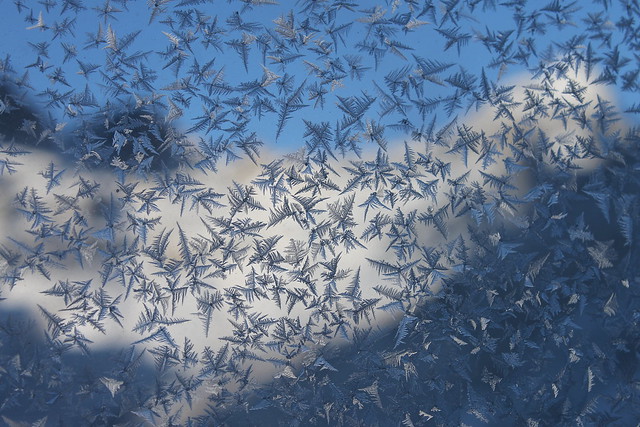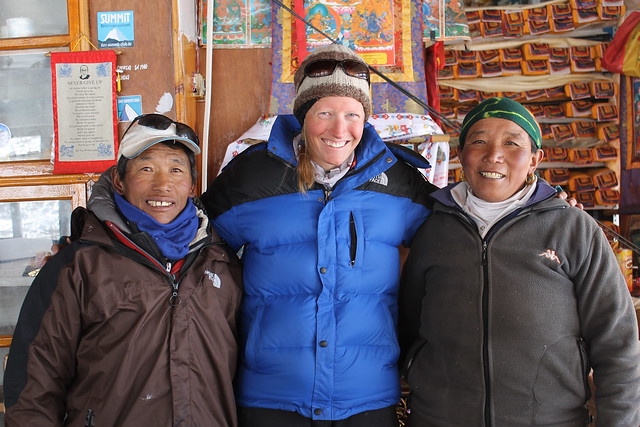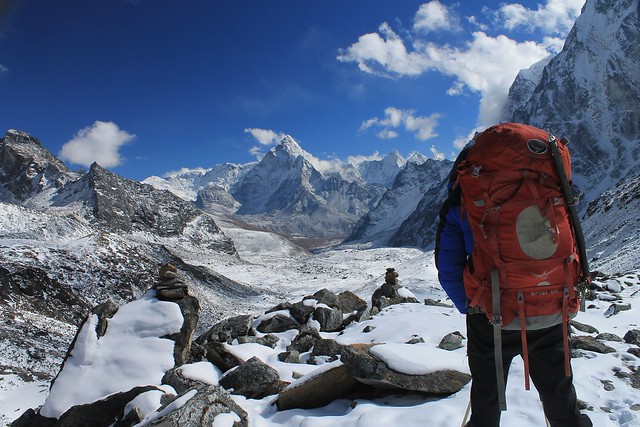‘How odd that there are no tourists here’, I said to Harriet for the fiftieth time. As she’d wandered round Namche looking for a room I’d lazed on some steps in the main street. Half an hour had passed and still not a single Leki pole-toting soul had marched past. Likewise on the wander down from Thame that morning. I know the nights are cold, but they’re not that cold. Where is everybody?’The contrast with the bustling trekkopolis we’d seen some Novembers back was startling. Were it not for the rows of shuttered outdoor shops we could easily have been convinced we weren’t in the trekking hub of the Everest region at all. Some days later we crossed a grey Renjo La. Everest was blanketed in cloud. Near the pass we met three German trekkers, our sole encounter with foreigners between Namche and Gokyo.
In Gokyo it snowed. The temperature fell to -20C, or possibly -25C; we weren’t sure, having inadvertently crushed our thermometer near Thame. The next night was colder still. This must be what was keeping the others away. We huddled round the yak-dung stove and spent hours chatting to our fascinating hostess, Pasang Futi. She’d started selling tea to trekkers who began appearing in her yak pastures in the 1970s, and from these humble beginnings had built a colossal lodge catering to 100 guests in high season. There were only four of us there.The weather cleared. We climbed Gokyo Ri, making a path through fresh snow to the top. For a serene hour we had the place to ourselves. Not a sound but our footsteps and the light fluttering of tattered prayer flags in the breeze.
We crossed Cho La, made trickier than anticipated by our fatigue and the slippery, snowy boulder fields. We met no-one on the path until Dzongla.
We hot-footed to Kala Patthar and lazed by the weather station in the hot sun. We were the only ones there.
To view all our photos, please take a look at our
Solu Khumbu photoset on Flickr.
 |
| Gokyo, mid January, the morning after a night of snowfall. |
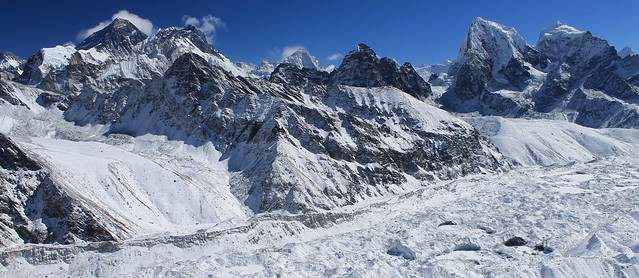 |
| Ngozumba Glacier, from Gokyo Ri. The glacier is usually an unattractive brown colour, as it’s covered in silty debris. After a fresh covering of snow it brightens up and looks far more appealing. |
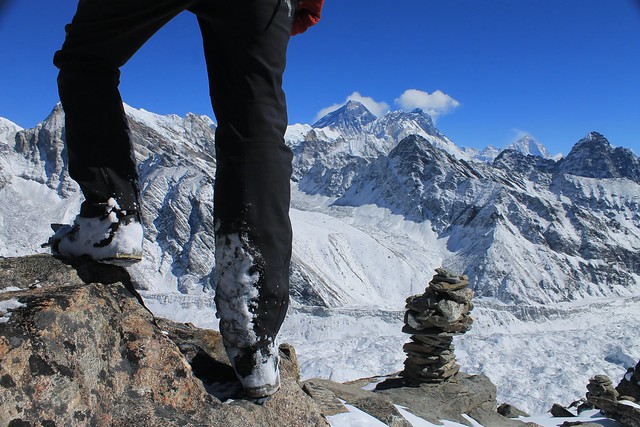 |
| Atop Gokyo Ri, looking east towards the giants of Everest, Lhotse and Makalu. |
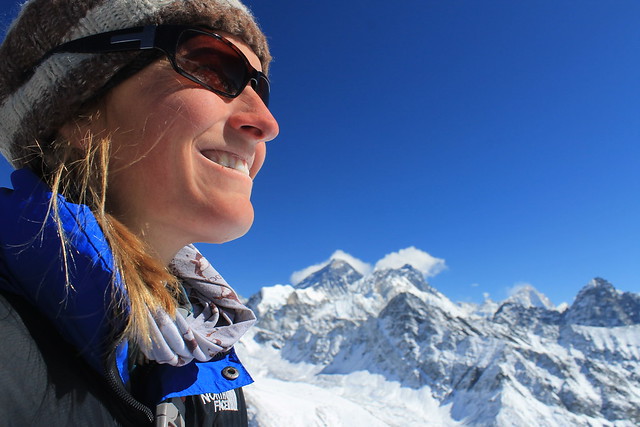 |
| A beautiful day on top of Gokyo Ri. More than enough reason for a big smile. |
 |
| On Gokyo Ri. Cho Oyu (left, the world’s 6th highest mountain) throwing clouds at Gyachung Kang (right, the world’s 15th highest at just under 8,000m). |
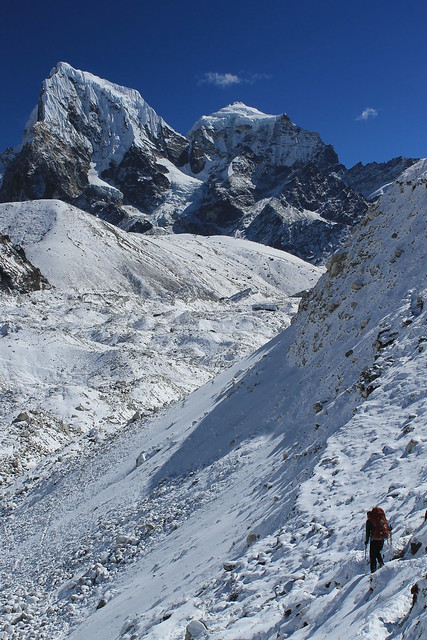 |
| On Ngozumba Glacier’s lateral moraine, about to cross over to Tangnak. |
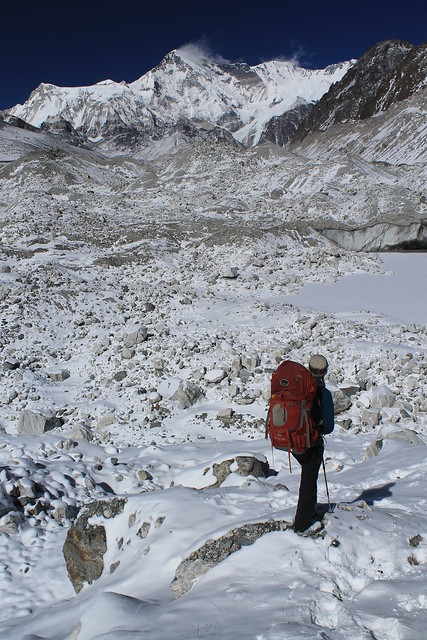 |
| Crossing Ngozumba Glacier, on another quiet day in Solu Khumbu. We met no-one on the two hour walk from Gokyo to Tangnak. |
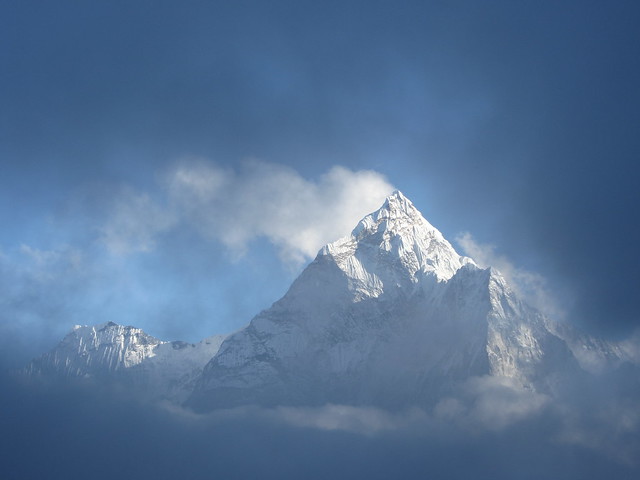 |
| Ama Dablam revealing herself for a few seconds on the walk up to Lobuche. |
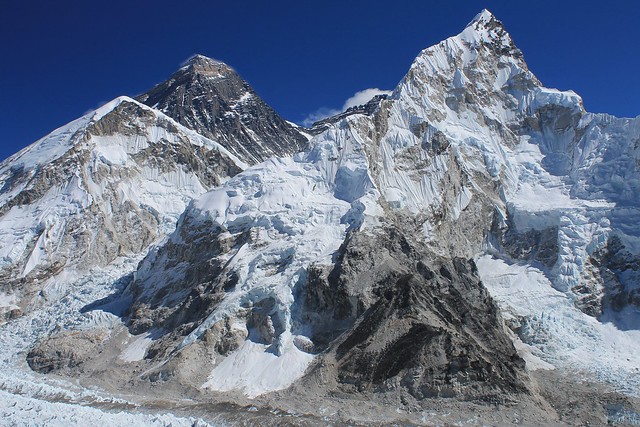 |
| The classic view of Everest, Nuptse and a bit of Lhotse from Kala Patthar. |
 |
| On Kongma La. Being made to feel very small by the hulking Nuptse-Lhotse wall, top left. |
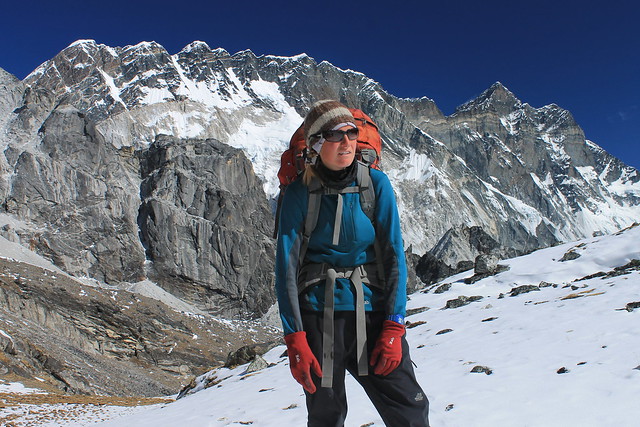 |
| Hanging out by the Nuptse-Lhotse wall. Haz Photoshopped-in. |
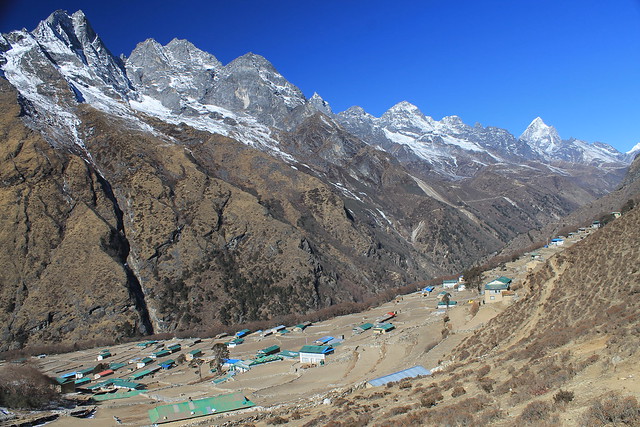 |
| Phortse, in the lower Gokyo Valley. |
Days – 11
Trekking days – 9
Distance – 126km
Trekking time – 42hrs
Amount climbed – 6,800m
Passes – 3 (Renjo La – 5,406m, Cho La – 5,362m, Kongma La – 5,510m)
Hills – 2 (Gokyo Ri – 5,362m, Kala Patthar – 5,642m)
Dal bhats – 11
Maggi – 0
Gringos – 52
